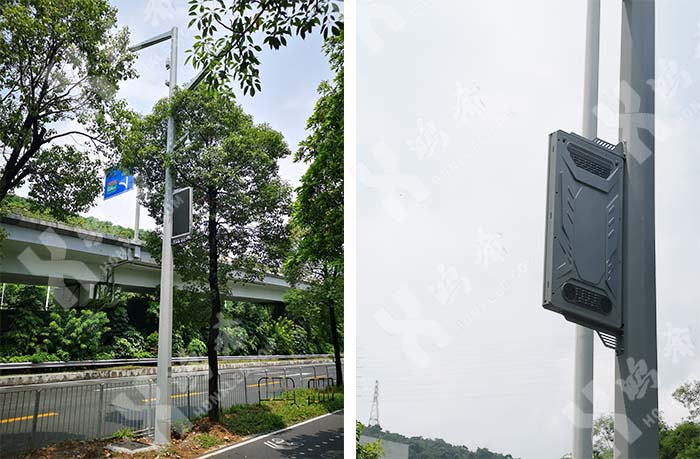LED light pole screens are becoming standard in smart cities for displaying public information, advertisements, and emergency alerts. While size and display technology are important, the material of the screen's housing plays a key role in its performance and lifespan. Two commonly used materials are die-cast magnesium aluminum and full cast aluminum. Each offers unique strengths depending on the project requirements.
Die-cast magnesium aluminum is a lightweight, high-strength alloy often used in structural applications. It offers good corrosion resistance and is ideal when weight reduction is a priority. In LED light pole screens, this material is typically used for shells, brackets, or secondary frames.
Key Benefits:
Lightweight: Reduces the load on poles, making installation easier.
Strong: Withstands wind, rain, and UV exposure in outdoor settings.
Formable: Allows for more intricate and stylish designs.
This material is great for large-format screens or projects where minimizing weight is crucial. However, it may not offer the same long-term corrosion protection or structural rigidity as full cast aluminum.

Full cast aluminum refers to using aluminum alloy to cast the entire structure of the screen, including the main frame and support base. This method results in a thicker, more solid build.
Key Benefits:
Durable: Built to endure tough weather conditions over long periods.
Corrosion-Resistant: Ideal for coastal or humid environments.
Stable: Provides strong structural support for tall or heavy screens.
Full cast aluminum offers superior strength and resistance but tends to be heavier and more costly than die-cast magnesium aluminum.

Die-Cast Magnesium Aluminum:
Brackets, enclosures, and secondary housing parts
Locations where weight constraints or installation flexibility matter
Projects that need creative shapes or unique designs
Full Cast Aluminum:
Main structural frames and support columns
Harsh environments exposed to rain, salt, or pollution
Installations where stability and lifespan are top priorities

| Material | Pros | Cons |
|---|---|---|
| Die-Cast Magnesium Aluminum | Lightweight, cost-effective, flexible design | Lower corrosion resistance and structural strength |
| Full Cast Aluminum | Strong, durable, long-lasting in tough environments | Heavier, more expensive, and fewer design options |
Choose Die-Cast Magnesium Aluminum if your project prioritizes ease of installation, creative design, and lower costs. It's ideal for commercial zones with moderate weather exposure.
Choose Full Cast Aluminum for industrial or municipal applications where reliability and durability matter most. It's the better option for areas prone to storms, high humidity, or long-term outdoor exposure.

Both die-cast magnesium aluminum and full cast aluminum are excellent materials for LED light pole screens, but each suits different scenarios. When planning your project, consider installation conditions, environmental challenges, and long-term maintenance goals. By selecting the right material, you ensure your LED display remains safe, stable, and visually appealing for years to come.

